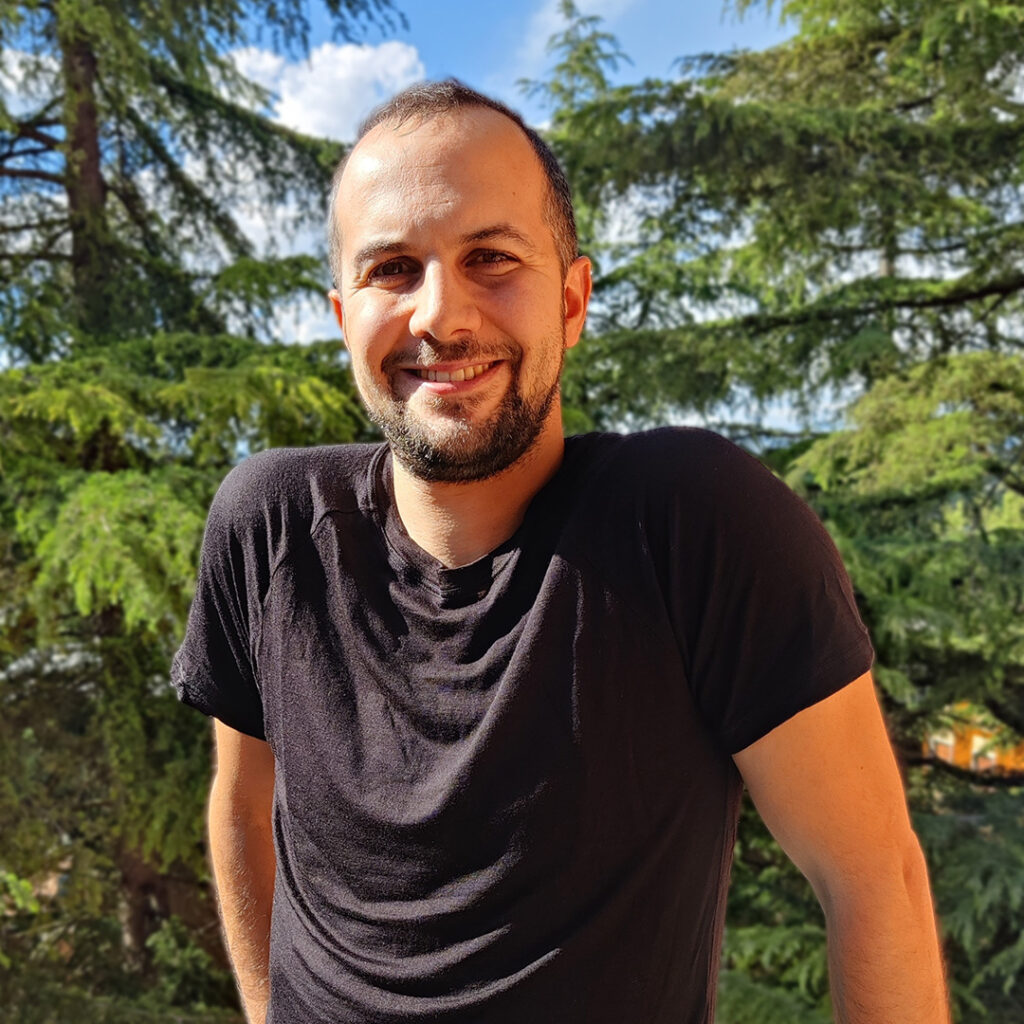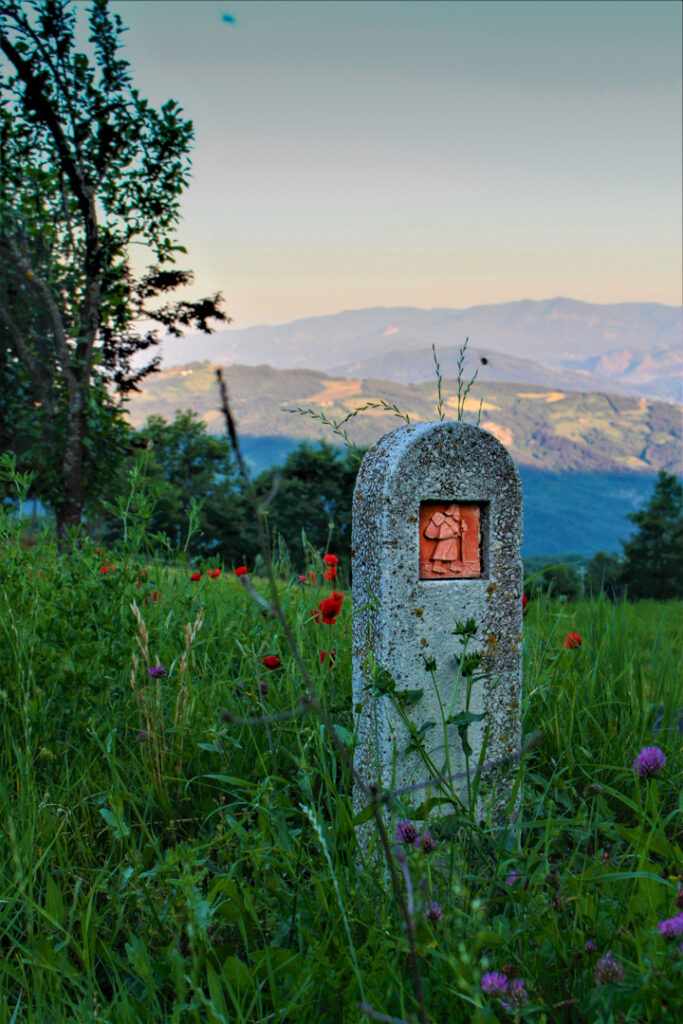Luca Farevelli talks to us about the Via Francigena with the authority of few others
Luca Farevelli talks to us about the Via Francigena with the authority of few others
Not only a pilgrim along the Via Francigena in his entire journey: Let's see why Luca knows this pilgrimage route like few others.
We had already mentioned Luca Faravelli in our article “What to put in the backpack?”;on that occasion we referred to one of his articles which appeared on the blog of the European Association of the Via Francigena Ways.
Luca is a young architect, but for how many imprints his boots have left on the paths of half of Europe, for the fact of being an official AIGAE guide, and for what has been his occupation for 7 years, we can define him – without fear of denial – an expert walker and an expert, above all, of the Via Francigena (particularly dear to us at CAMCO).
Below we report the entire pleasant conversation we had with Luca.
It is an interview that is part of our editorial line of interviews with professional guides, who we ask to tell us a little about them, just to introduce themselves, what are the favorite stages of their journey of the heart, other curiosities about these stages, and our classic question: what is that thing that they always put in their backpack and that generally few people think about.
Enough chatter, let’s move on to the interview with Luca!
Question: Luca, introduce yourself to our readers!
Luca: Luca Faravelli, born in 1990, architect.
I start collaborating with EAVF (European Association of the Via Francigena Ways) in April 2017 for the UNESCO project. Called to follow the preliminary phase on a technical level, then the framework, and now we are moving towards the UNESCO candidacy dossier of the Via Francigena. So initially I supported the Association for this and then over time I came to manage other projects, conferences, events, as well as walks and excursions obviously as a guide, and then – for what was taught in the guide course, but also for what I learned directly in the field – route tracing activities, identification of critical issues and the possibility of use.
Last year, with the Piedmont Region, as part of the “Via Francigena for all” project, we created a project to evaluate the accessibility of some routes in the Canavese and Valsusino stretches.
These are some activities that I carry out and are in line with the profile of a hiking guide. In summary: route tracing, signage plans, and so on.
Question: How long have you been a guide?
Luca: I am an environmental hiking guide registered with AIGAE since January 2021 for the Emilia-Romagna region.
Question: Which path holds a special place in your heart and which trait in particular?
Luca: the Via Francigena is 3,200 km long, excluding variants: 30 in England, around 900-1000 in France, around 200 in Switzerland, in Italy there are roughly 1000 from the Great San Bernardo to Rome and 800-900 from Rome to Santa Maria of Leuca (in this case including the variants), then the precise calculations are easy to make supported by the section of our portal dedicated to the stages in the various countries.
I should have covered about 70-75% of the total.
So in England the whole 30km, in France a good part of it in Haute-France, almost the whole part in Bourgogne-Franche-Comtè, some stages in Switzerland, in Italy I walked almost the entire Via Francigena, maybe I miss it a little I did Puglia, I did Campania, I did Lazio: I certainly did half of it, I did many stages in Tuscany, I did the 30 km of Liguria, I did Lombardy by tracing the entire route, both pedestrian and cycle path, Piedmont some, not many, and Val d’Aosta I did it all.
The part of the route that really fascinates me, probably because I’m local, is the stretch from Fornovo di Taro to Pontremoli, then the stretch of Emilia-Romagna which then enters Tuscany passing through the Cisa pass.
There are 3 legs: Fornovo di Taro – Cassio, Cassio – Cisa Pass, Cisa Pass – Pontremoli.
They are truly stupendous, it is a stretch of the Apennines, and it is the first time that the Francigena meets the Apennines, and, as is known, the Apennines are different from the Alps, in terms of conformation and type of paths.
There is this continuous up and down, at times challenging, at others perhaps more relaxing, in any case it is “smart”, the Apennines are “smart”!
Question: Regarding these three legs, what is the “pearl” of the Via Francigena in this stretch? What can’t our walking friends miss?
Luca: “pearls” of the journey, in the plural. I want to mention at least five of them.
• Castello di Casola, which is a hamlet that can be reached from above, so you have a view of this ancient, medieval, beautiful village.
• The Parish Church of Bardone, which is just before, very pretty, ancient, very well kept.
• The arrival at Monte Valoria, which are those 2/3 km of variant: instead of going directly to the Cisa Pass, you pass through Monte Valoria. Here there is the memorial stone of the Duchy of Parma, from the 19th century, particularly nice and from here you have a truly extensive view, potentially you can see the sea and at the same time the Pre-Alps when there is an exceptional day. It is a place that I carry in my heart.
• Then when you go to the other side, you come across many small villages within the territory of the municipality of Pontremoli in Tuscany, but a truly beautiful place is the Groppodalosio Bridge, made of stone, well maintained, wonderful, “scenic” I’d say.
• The Devil’s Leaps: rocky conformations near Cassio, with a particular geological history that can easily be explored online.
Question: one of the great joys of the pilgrim is refreshment after many hours of walking. What is there to taste in this part of Italy?
Luca: Starting from the Emilian territory, in that part mushrooms reign supreme; therefore, this is certainly a food that must absolutely be tasted in the right season.
If you go to Pontremoli instead, obviously you have the local desserts; you get closer to Liguria and therefore you start to have an interesting dessert menu.
There are the testaroli, very famous, and perhaps a little less famous but still worth drinking, it is the “white gold”, a cocktail that I would not say “light”, let’s say “interesting”, and whose formula is secret and therefore certainly goes tried.
Be prepared to drink at least 2 or 3 because you just can’t stop after the first one.
Question: recommended period to cover these three stages?
Luca: I’ve done it in all seasons. I would avoid July and August because it is hot. I enjoy the winter very much. I did it in November, in late December, in January, and it’s interesting. Nice in winter, obviously you meet fewer people. I prefer cold to hot, so I suggest it in winter.
Of course, nature may offer you less in that period, alternatively another wonderful time to do it is April. April certainly is interesting.
Question: CAMCO is a partner of the European Association of the Via Francigena Ways for clothing, which CAMCO product do you have, how do you like it?
Luca: Really good. I have the Bisbìn t-shirt.
The material is perfect: it doesn’t sting, it doesn’t pull, it’s soft enough, and above all it breathes perfectly! Absolutely a product that I recommend and am already recommending to colleagues and others, because it is a truly quality product and therefore I hope that many people can get to know it because it truly has exceptional validity.
Question: a curiosity that we promised to all our readers, as a gem of the interview: what do you always put in your backpack that no one – or almost no one – thinks about?
Luca: I always bring duct tape, the thick one used for parcels, for shoes. Obviously if a pilgrim loses his shoes or they get damaged or the sole simply comes off, the duct tape saves your life. The nice wide one, 3 fingers wide.
Another tool that I have found useful in my life as a guide and hiker (I started walking in 2011 doing the Camino de Santiago – the last 120 km, which I consider the beginning of my hiking career) is the whistle!
It is useful to make yourself heard, to signal your presence, because perhaps in certain cases you enter hunting territory, there are hunters wandering around, you certainly have to stay on the path, but whistle with a whistle that has a more important sound, a little the higher, the better.
(editor’s note: a list of other useful things that professional guides put in their backpack is given in our article “What to put in the backpack?“, in which there is also a reference to an article by Luca which appeared on the AEVF blog, in which Luca gives us advice on how to prepare your own first aid kit).
Question: next hikes?
Luca: In addition to the Via Francigena (obviously, ed. 😉), I was considering the Fishermen’s Way in Portugal.
Not easy for the organization because it is a fairly new path, but I see that it is being structured well, so I would like to venture down that path.
Then, by bicycle, having had my first experience of cycle touring between Pescara and the Gargano last November, I was interested in the Eurovelo 6: the one that crosses halfway through France, passing near the Loire and from Nantes, Orleans, Besançon.






